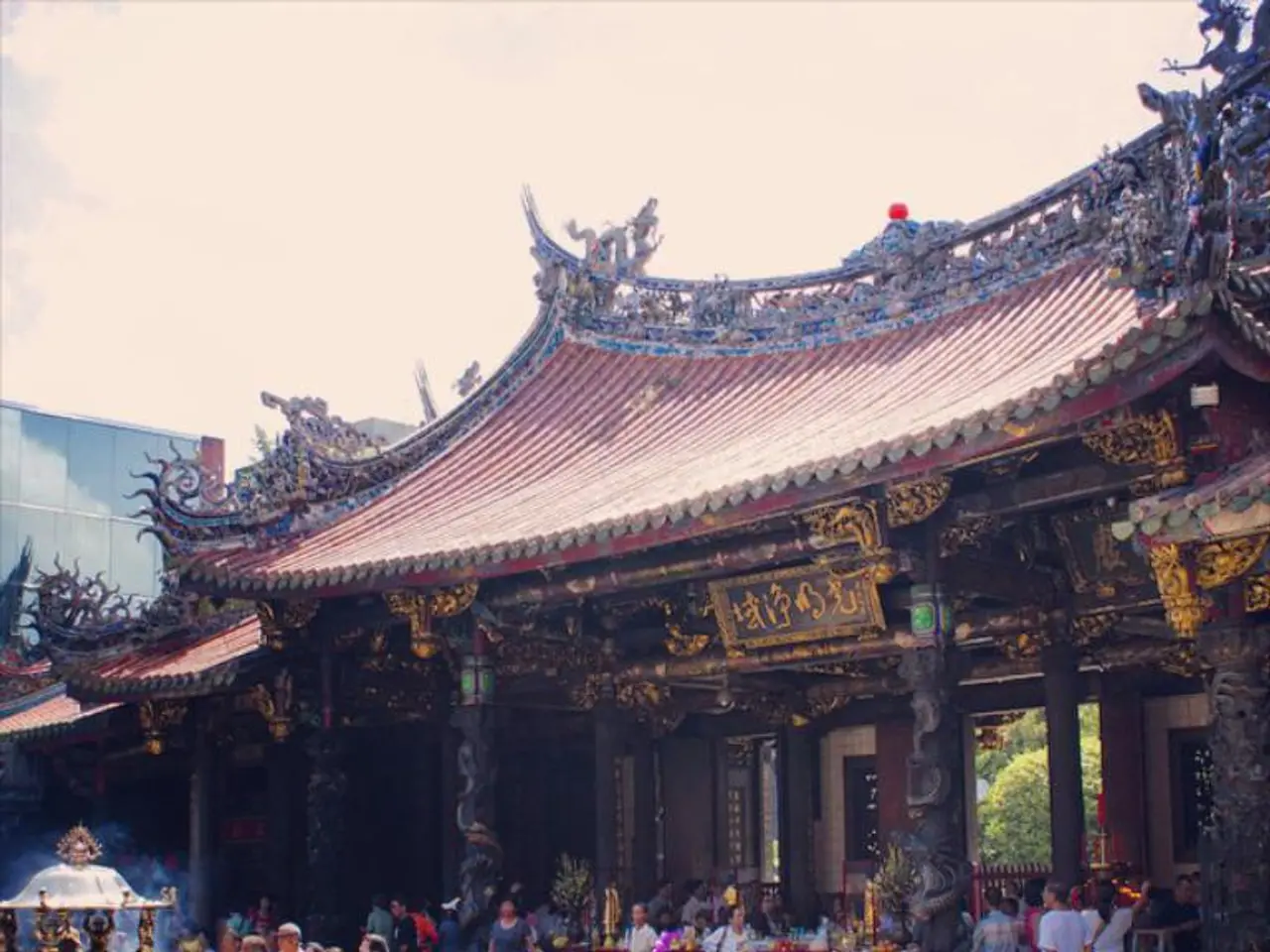Immersive Explorations in Japan: A Sensory Tour of Hokkaido
**Revitalizing Ainu Crafts in Hokkaido, Japan**
Nibutani Ainu crafts, a testament to the rich cultural heritage of the Ainu people in Hokkaido, Japan, are experiencing a resurgence in modern times. These traditional crafts, known for their intricate designs and connection to nature, have been passed down through generations and are now being adapted for contemporary goods.
The Ainu, the indigenous people of Hokkaido, have a distinctive culture deeply rooted in the land. Their unique linguistic, spiritual, and craft traditions have been preserved and innovated by contemporary artists and designers in the region.
Historically, the Ainu lived in harmony with nature, practising hunting and fishing. Their crafts reflect this connection, with materials like Nibutani-ita, walnut-wooden items, and Nibutani-attus, a soft fabric made from the inner barks of elm and zelkova trees. These crafts, adorned with elaborate embroidery and applique, are a testament to the Ainu's skill and attention to detail.
Nibutani, a small area in Hokkaido with a high percentage of Ainu residents, is a significant hub for the preservation and expression of Ainu culture. Here, traditional crafts like the Nibutani ita (wooden platter) and attus (wood fiber textile) are still produced.
Despite historical marginalization, the Ainu people have actively worked to preserve and revitalize their traditions, including their crafts. This effort is crucial for maintaining cultural identity and passing down historical knowledge to future generations. Events like EXPO 2025 Osaka have featured Ainu crafts, highlighting their importance in cultural heritage.
In recent decades, there has been a resurgence of Ainu identity and culture. This revival includes legal victories like the 1997 passage of the "Ainu Culture Law" and the establishment of the first Ainu political party in the early 2000s.
Today, Nibutani Ainu crafts not only serve as a testament to the Ainu's cultural resilience but also as a symbol of their ongoing fight for recognition and cultural preservation. These crafts continue to inspire new generations of artisans and are shared with the world through various cultural events and exhibitions.
Handling Nibutani-ita and Nibutani-attus items can provide a tactile portal to a unique northern experience, offering a glimpse into the Ainu's deep connection with nature. Contemporary adaptations of these crafts, such as business card cases made from Nibutani-attus and wine stands inspired by the carved wooden ikupasuy, showcase the Ainu's ability to innovate while preserving traditional practices.
The landscape of Hokkaido, with its snowy ski-slopes, pristine lakes, and diverse wildlife, is key to understanding Ainu philosophy. The Ainu religion held some parallels with Shinto beliefs, but also emphasized the bear as a sacred animal and practiced a ceremony called Iomante, in which a bear was raised from a cub and eventually sacrificed. Ainu traditional cuisine, based on meat from bears, badgers, oxen, horses, wolves, foxes, and fish, was a reflection of their close relationship with the environment.
The Ainu values of sustainability and respect for nature are being shared with the world through their crafts, offering a unique perspective on the relationship between people and their environment. The revitalization of Ainu crafts in Hokkaido is not just a celebration of the past, but a commitment to preserving and sharing this rich cultural heritage for future generations.
- The resurgence of Nibutani Ainu crafts in modern times includes contemporary adaptations like business card cases made from Nibutani-attus and wine stands inspired by the carved wooden ikupasuy.
- The cultural travel to Hokkaido, Japan, offers a chance to explore the unique home-and-garden designs that resonate with the Ainu's deep connection with nature.
- Ainu cultural events showcase not only their traditional crafts but also their unique cuisine, a reflection of their close relationship with the environment.
- The revitalization of Ainu crafts, like the intricate Nibutani-attus and walnut-wooden items, is a significant part of the cultural-travel experience, especially in art-focused cities like Nibutani.
- In Hokkaido's pristine lakes and snowy ski-slopes, one can find a link between the Ainu's reverence for nature and their aesthetic in fashion, design, and lifestyle.
- The preservation of Ainu traditions, such as the practice of making Nibutani-ita and Nibutani-attus, is essential for maintaining the region's cultural identity and passing down historical knowledge to future generations.
- The renaissance of Ainu crafts, from traditional tea sets to contemporary performance art, offers a compelling fusion of ancient tradition and modern innovation, making it a captivating aspect of Japan's cultural-travel scene.




